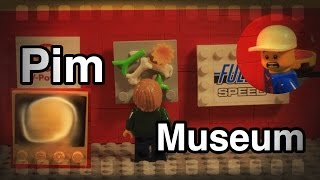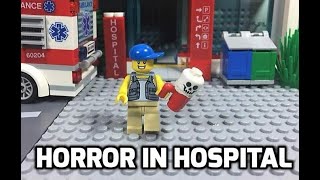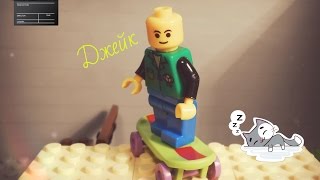Wednesday, 10 December, 2025г.
















Где искать: по сайтам Запорожской области, статьи, видео ролики
пример: покупка автомобиля в Запорожье
First Shot Of The Civil War ~Lego Shot
On Thursday, April 11, 1861, Beauregard sent three aides, Colonel James Chesnut, Jr., Captain Stephen D. Lee, and Lieutenant A. R. Chisolm to demand the surrender of the fort. Anderson declined, and the aides returned to report to Beauregard. After Beauregard had consulted the Confederate Secretary of War, Leroy Walker, he sent the aides back to the fort and authorized Chesnut to decide whether the fort should be taken by force. The aides waited for hours while Anderson considered his alternatives and played for time. At about 3 a.m., when Anderson finally announced his conditions, Colonel Chesnut, after conferring with the other aides, decided that they were "manifestly futile and not within the scope of the instructions verbally given to us". The aides then left the fort and proceeded to the nearby Fort Johnson. There, Chesnut ordered the fort to open fire on Fort Sumter.[14]
On Friday, April 12, 1861, at 4:30 a.m., Confederate batteries opened fire, firing for 34 straight hours, on the fort. Edmund Ruffin, noted Virginian agronomist and secessionist, claimed that he fired the first shot on Fort Sumter. His story has been widely believed, but Lieutenant Henry S. Farley, commanding a battery of two 10 inch siege mortars on James Island fired the first shot at 4:30 A.M. (Detzer 2001, pp. 269–71). No attempt was made to return the fire for more than two hours. The fort's supply of ammunition was not suited for the task; also, there were no fuses for their explosive shells, which means that they could not explode. Only solid iron balls could be used against the Rebel batteries. At about 7:00 A.M., Captain Abner Doubleday, the fort's second in command, was given the honor of firing the Union's first shot, in defense of the fort. He missed, in part because Major Anderson did not use the guns mounted on the highest tier, the barbette tier (where the guns could engage the confederate batteries better), where the gunners would be more exposed to Confederate fire. The firing continued all day. The Union fired slowly to conserve ammunition. At night the fire from the fort stopped, but the Confederates still lobbed an occasional shell into Sumter. On Saturday, April 13, the fort was surrendered and evacuated. During the attack, the Union flag fell. Lt. Norman J. Hall risked life and limb to put them back up, burning off his eyebrows permanently. A Confederate soldier bled to death having been wounded by a misfiring cannon. One Union soldier died and another was mortally wounded during the 47th shot of a 100 shot salute, allowed by the Confederacy. Afterwards the salute was shortened to 50 shots. Accounts, such as in the famous diary of Mary Chesnut, describe Charleston residents along what is now known as The Battery, sitting on balconies and drinking salutes to the start of the hostilities.
The Fort Sumter Flag became a popular patriotic symbol after Major Anderson returned North with it. The flag is still displayed in the fort's museum. A supply ship Star of the West took all the garrison members to New York City. There they were welcomed and honored with a parade on Broadway. hi i am Fred! and i do Stop Motion, Origami, and other Build your own videos! LEGOS, For Kids Of All Ages! Thank you so much for liking my videos and subscribing to my channel!
My goal is 1,000,000 subscribers so please subscribe.
"Therefore encourage one another and build one another up, just as you are doing." 1 Thessalonians 5:11
i do all my videos on a iPhone,
the apps and websites i use are:
stop motion studio pro (4.99$)
splice pro (3,99$)
PicMix (0.99$)
iMovie (4.99$)
Gun movie fx (4.99$)
Action movie all in app fxs (10.99$)
youtube create (link: https://www.youtube.com/audiolibrary/music)(free)
other help from:
buster (my brother)
MySnailEatsPizza's Lego Videos (my friend)(link https://www.youtube.com/user/MySnailEatsPizza1)
lego batwing (my neighbor)(link https://www.youtube.com/user/LegoBatWing)
thanks for all the help guys.
Теги:
American Civil War (Military Conflict) History First Documentary War (Quotation Subject) Museum Stop Animation Motion LEGO (Interest) Stop Motion (TV Genre) War (War Album) Culture Shots Lego Pool lego stop motion First Shot Of The Civil War Lego Shot shot short Short Film (Film Genre) Film (Film) Amazing
Похожие видео
Мой аккаунт


 У вашего броузера проблема в совместимости с HTML5
У вашего броузера проблема в совместимости с HTML5


